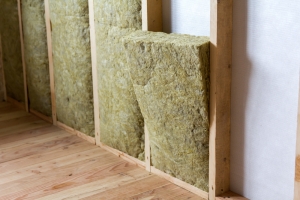 In the bustling rhythm of urban life, where the symphony of city sounds orchestrates our daily routines, the concept of acoustic insulation emerges as a crucial element in architectural design. Acoustic insulation, also known as soundproofing, plays a vital role in creating spaces that offer tranquility, privacy, and enhanced well-being for occupants. In this article, we delve into the significance of acoustic insulation, the various forms of sound propagation, and the best materials available for effective soundproofing.
In the bustling rhythm of urban life, where the symphony of city sounds orchestrates our daily routines, the concept of acoustic insulation emerges as a crucial element in architectural design. Acoustic insulation, also known as soundproofing, plays a vital role in creating spaces that offer tranquility, privacy, and enhanced well-being for occupants. In this article, we delve into the significance of acoustic insulation, the various forms of sound propagation, and the best materials available for effective soundproofing.
The Importance of Sound Insulation
Noise pollution has been identified as a significant health risk, particularly for individuals residing and working in urban environments. While it may not always be possible to control noise at its source, implementing soundproofing measures in buildings can provide a valuable solution. By installing soundproofing materials in roofs or building exteriors, external noise from sources such as traffic or airplanes can be significantly reduced. Moreover, within buildings, insulation can enhance privacy and mitigate disturbances from neighboring properties, such as music or footsteps from upstairs apartments. This is especially beneficial when applied to partitions between different spaces in residential or office buildings. Utilizing sound insulation boards can effectively minimize noise intrusion, creating more peaceful living and working environments.
Forms of Sound Propagation
Understanding how sound travels through walls, ceilings, and roofs is crucial in determining the appropriate insulation needs. Various forms of sound propagation include:
• Direct Sound Transmission: This occurs when sound passes directly through a wall, ceiling, or floor.
• Flanking Noise: Flanking noise refers to sound reaching a room through an indirect path, such as noise from a neighboring apartment reaching your bedroom through routes other than the shared wall or noise from a hallway reaching your office through alternative pathways.
• Other Forms: These include leakage through inadequately sealed doors and windows, brickwork, and un-insulated pipelines.
Best Materials for Acoustic Insulation
Achieving effective soundproofing involves utilizing the right materials to absorb and minimize sound waves, thereby reducing resonance and unwanted noise. Some of the best materials for acoustic insulation include:
• Acoustic Foam: Renowned for its porous and lightweight design, acoustic foam panels excel at absorbing sound waves, making them ideal for reducing reverberation and controlling noise levels in settings such as media rooms, music studios, and home offices.
• Double Glazing: Double-glazed windows with acoustic laminated glass are highly effective in reducing external noise, including car and street noise, making them perfect for urban environments. They offer a great alternative for soundproofing both homes and offices.
• Mineral Wool: Made from mineral wool extracted from minerals, this material provides powerful sound insulation and is commonly used in wall cavities, ceilings, and other spaces to minimize noise transfer between rooms.
• Glass Wool: Also known as fiberglass insulation, glass wool is a popular choice for thermal insulation. Its effective sound absorption properties make it cost-effective for soundproofing walls and ceilings, providing dual insulation services.
• Textile-Based Materials: Heavy curtains, carpets, and fabric-wrapped panels are commonly used as sound-absorbing materials in quiet-seeking homes and offices. In addition to reducing noise, they contribute to the visual appeal of their surroundings.
Conclusion
In conclusion, acoustic insulation plays a crucial role in enhancing comfort, privacy, and overall well-being in modern buildings. By understanding the importance of sound insulation, the various forms of sound propagation, and the best materials available, architects and designers can create spaces that offer a peaceful sanctuary amidst the urban cacophony, ensuring a harmonious living and working environment for occupants.
For Further Reading
Here are three online resources where readers can find further information on acoustic insulation:
• “Reduce Noise With Sound-Proofing Insulation”, an article by Insulation Outlook, can be found at: https://insulation.org/io/articles/reduce-noise-with-sound-proofing-insulation/
• Architectural acoustics are discussed in an article by the same name at Wikipedia. The link is: https://en.wikipedia.org/wiki/Architectural_acoustics
• Physics World has published their article on the subject, entitled “Acoustics in Architecture” which can be found at https://physicsworld.com/a/acoustics-in-architecture/
